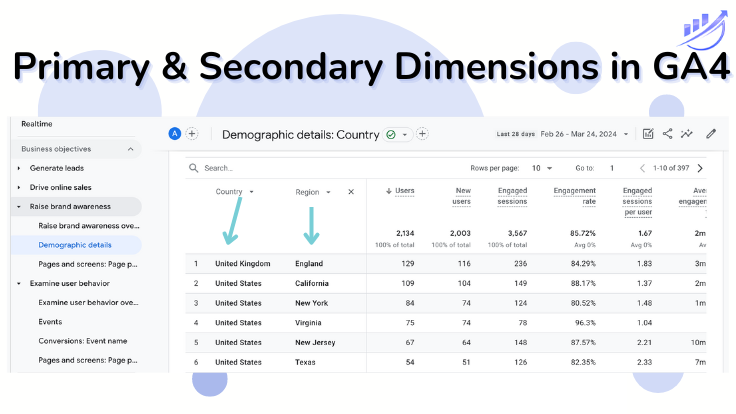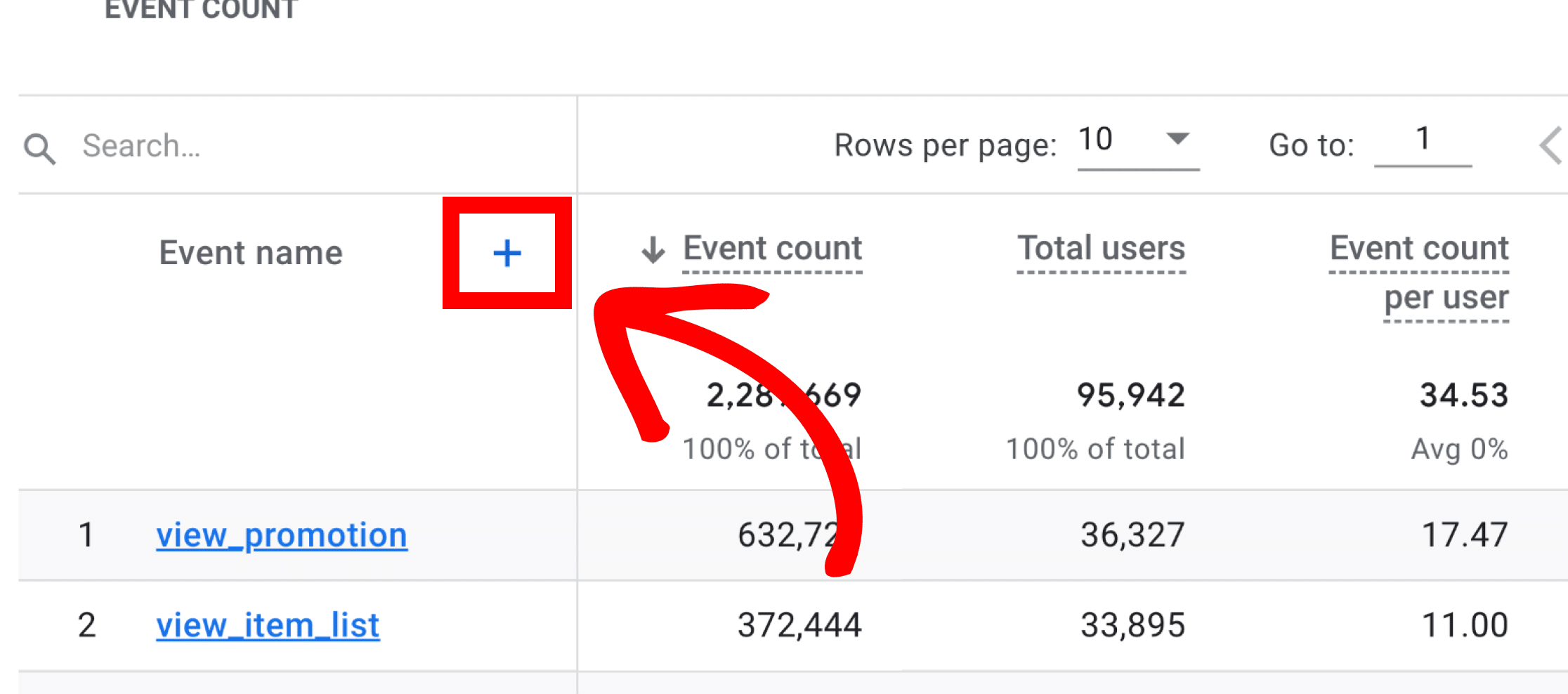What Is Secondary Dimension in Google Analytics: Tips and Best Practices
What Is Secondary Dimension in Google Analytics: Tips and Best Practices
Blog Article
Google Analytics Unleashed: Using the 2nd Measurement for Advanced SEO Optimization
In the world of digital advertising, where the landscape is ever-evolving and elaborately attached, the capacity to amass significant insights from data has actually become critical. Google Analytics stands as a foundation device in recognizing the actions and communications of online customers, using a wealth of info to those that recognize how to harness its possibility. Nonetheless, it is when we venture into the realm of the Second Dimension that the true power of Google Analytics for SEO optimization starts to disclose itself. By exploring this dimension and unlocking its abilities, a world of advanced approaches and methods opens, assuring to raise search engine optimization methods to new heights of effectiveness.
Recognizing the 2nd Dimension in Google Analytics
When evaluating data in Google Analytics for SEO optimization, recognizing the idea of the second measurement is crucial for obtaining much deeper insights into individual habits and website performance. In Google Analytics, dimensions are features of your information, giving context and enabling you to organize information. The 2nd measurement matches the key measurement, offering a more thorough sight of the information being assessed. By using the 2nd dimension effectively, SEO professionals can look into even more particular aspects of individual interactions and web traffic sources, causing notified decision-making and targeted optimization methods - what is secondary dimension in google analytics.
As an example, by integrating dimensions such as 'touchdown page' with 'tool classification' as the 2nd dimension, one can determine which tools customers are using to accessibility details landing pages. This understanding can aid prioritize responsive style enhancements or device-specific optimizations to enhance the user experience and drive far better SEO performance. Mastery of the 2nd measurement in Google Analytics empowers SEO professionals to reveal hidden patterns, relationships, and chances within their information, ultimately causing a lot more efficient optimization efforts.
Leveraging Information Segmentation for Search Engine Optimization Insights
To obtain workable insights for SEO optimization, skillfully leveraging information segmentation is vital in extracting valuable information from Google Analytics. By segmenting data, search engine optimization professionals can study internet site web traffic patterns, individual habits, and involvement metrics with accuracy. This segmentation permits a much more granular analysis of various user segments based upon different criteria such as demographics, location, gadgets utilized, and website traffic resources.
One secret benefit of data segmentation is the capacity to identify high-performing sections that can be targeted for tailored search engine optimization approaches. By comprehending the unique attributes and choices of these sectors, SEO initiatives can be optimized to bring in and involve these beneficial target markets efficiently. On the other hand, information segmentation can additionally unveil underperforming sectors that call for interest and optimization to improve their customer experience and drive much better SEO results.
Advanced Evaluation Strategies for SEO Optimization
Applying sophisticated analytical methods is critical for improving SEO approaches and attaining optimal on-line presence and performance (what is secondary dimension in google analytics). Advanced evaluation strategies play directory a pivotal role in fine-tuning SEO initiatives to drive natural website traffic and improve online search engine rankings. One such strategy is cohort analysis, which enables click resources marketing professionals to group customers based upon common characteristics or habits, permitting a much deeper understanding of user engagement and conversion patterns gradually
Furthermore, advanced keyword evaluation goes beyond recognizing high-volume search phrases by delving right into search intent and semantic relevance. By assessing customer interactions with specific key words and their influence on conversion rates, services can tailor their content to far better straighten with user assumptions and internet search engine formulas.
Furthermore, sentiment analysis tools can give valuable insights into exactly how customers view a brand or its products/services based upon on-line discussions and evaluations. By leveraging sentiment evaluation information, companies can deal with consumer worries, boost brand name view, and improve overall SEO efficiency.
Uncovering Patterns and Trends in User Behavior

Recognizing fads in customer behavior allows SEO experts to customize their methods to satisfy the progressing needs and preferences of their target audience. As an example, if a specific page constantly has a high bounce rate, it might show that the material is not resonating with site visitors. This information can motivate modifications to the material or format to raise engagement and retention.
Moreover, tracking fads with time makes it possible for marketers to adapt proactively to altering market problems and consumer actions. By staying in advance of these shifts, services can preserve an one-upmanship and drive continual renovation in their search engine optimization efforts.
Implementing Workable Techniques for Search Engine Optimization Success
Having actually understood the understandings acquired from evaluating individual habits patterns and patterns through Google Analytics, the next step towards search engine optimization success entails executing functional approaches that leverage this information properly. One essential method is enhancing website content based upon individual interactions. By determining which web pages obtain the many interaction, such as high bounce rates or low time on page, web site proprietors can optimize these web pages by improving material relevance, boosting individual experience, and executing strong call-to-actions.
Furthermore, using information on the most prominent entrance and departure pages can help in enhancing inner linking structures to lead customers via the web site successfully and raise page sights. In addition, evaluating keyword performance and conversion prices can educate content creation approaches and aid prioritize key words that drive organic web traffic and conversions.

Conclusion
In verdict, harnessing the 2nd measurement in Google Analytics can supply beneficial insights for advanced SEO optimization. By leveraging information segmentation, analyzing customer habits patterns, and implementing actionable techniques, organizations can boost their Search engine optimization success.
When assessing data in Google Analytics for SEO optimization, understanding the principle of the second measurement is critical for obtaining deeper understandings into user habits and site performance. By using the second measurement successfully, Search engine optimization professionals can delve into more details aspects of user interactions and website traffic sources, leading to notified decision-making and targeted optimization approaches.
On the other hand, information segmentation can likewise introduce underperforming segments that call for attention and optimization to improve their customer experience and drive much better SEO results.
Having realized the insights gained from examining customer actions patterns and patterns through Google Analytics, the following action towards Search engine optimization success entails carrying out practical approaches that utilize this data properly (what is secondary dimension in google analytics). By leveraging data segmentation, evaluating user behavior patterns, and implementing actionable techniques, businesses can boost their SEO success
Report this page